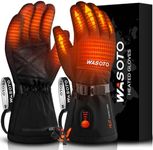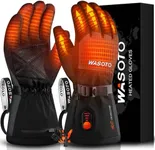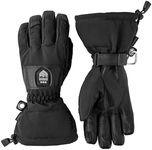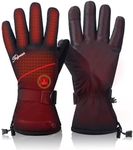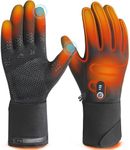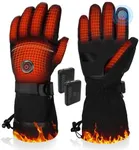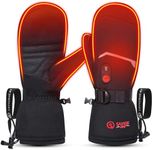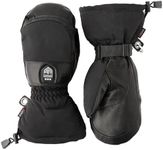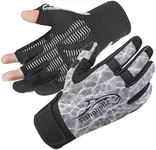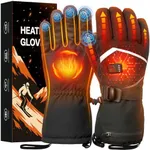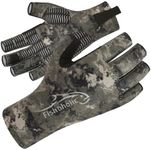Buying Guide for the Best Heated Ski Gloves
When it comes to picking the right heated ski gloves, it's important to consider several key specifications to ensure you get the best fit for your needs. Heated ski gloves are designed to keep your hands warm in extremely cold conditions, making your skiing experience more comfortable and enjoyable. The right pair of gloves will depend on factors such as the type of skiing you do, the temperatures you typically encounter, and your personal comfort preferences. Here are some key specs to consider when choosing heated ski gloves.Heating ElementsHeating elements are the components within the gloves that generate heat. This spec is crucial because it determines how effectively the gloves can keep your hands warm. Heating elements can be distributed throughout the glove or concentrated in specific areas like the fingers and back of the hand. For those who ski in extremely cold conditions, gloves with comprehensive heating coverage are ideal. If you only need occasional warmth, gloves with heating elements in key areas might suffice. Consider your typical skiing environment and how much warmth you need to stay comfortable.
Battery LifeBattery life refers to how long the gloves can provide heat on a single charge. This is important because it affects how long you can stay warm while skiing. Battery life can range from a few hours to an entire day, depending on the glove model and the heat setting used. For all-day skiing, look for gloves with longer battery life or the option to carry spare batteries. If you only ski for a few hours at a time, shorter battery life may be acceptable. Think about your skiing habits and choose gloves with a battery life that matches your needs.
Heat SettingsHeat settings allow you to adjust the level of warmth provided by the gloves. This spec is important because it gives you control over your comfort in varying temperatures. Most heated ski gloves come with multiple heat settings, typically ranging from low to high. If you ski in a variety of conditions, gloves with adjustable heat settings are beneficial as they let you customize the warmth to suit the weather. Consider how much control you want over the heat output and choose gloves with the appropriate number of settings.
Material and InsulationThe material and insulation of the gloves affect their overall warmth, durability, and comfort. This spec is important because it determines how well the gloves can protect your hands from the cold and wet conditions. Common materials include leather, synthetic fabrics, and waterproof membranes. Insulation types vary, with options like down, synthetic fibers, and fleece. For harsh, wet conditions, look for gloves with waterproof materials and high-quality insulation. If you ski in milder conditions, lighter materials and insulation may be sufficient. Consider the typical weather you encounter and choose gloves with materials and insulation that match those conditions.
Fit and ComfortFit and comfort are crucial for ensuring that the gloves feel good on your hands and allow for proper movement. This spec is important because ill-fitting gloves can hinder your skiing performance and cause discomfort. Heated ski gloves come in various sizes and designs, so it's essential to find a pair that fits well. Look for gloves with adjustable straps, ergonomic designs, and soft linings for added comfort. Try on different sizes and styles to find the best fit for your hands. Consider how the gloves feel when you're wearing them and choose a pair that offers both comfort and functionality.
Waterproofing and BreathabilityWaterproofing and breathability are essential for keeping your hands dry and comfortable. This spec is important because wet hands can quickly become cold, and lack of breathability can lead to sweaty, uncomfortable hands. Look for gloves with waterproof membranes like Gore-Tex or similar technologies that provide a barrier against moisture while allowing sweat to escape. For those who ski in wet, snowy conditions, high waterproofing is crucial. If you ski in drier conditions, breathability might be more important. Consider the typical weather you ski in and choose gloves with the right balance of waterproofing and breathability.
